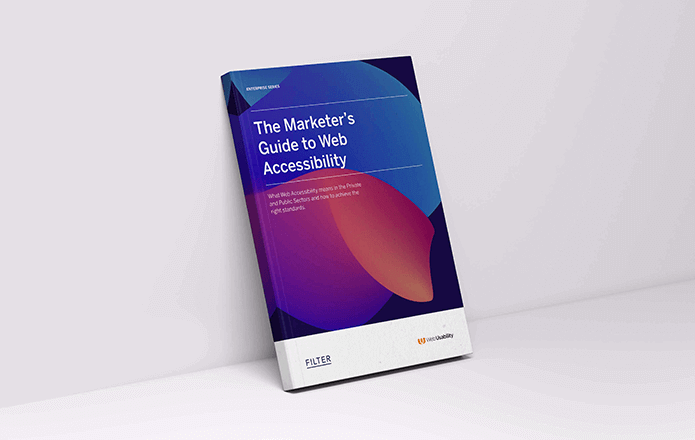
Join us on a deep-dive into accessibility within the WordPress community, providing a more inclusive and user-friendly experience for all WordPress users.

WordPress is one of the worlds leading open-source Content Management Systems (CMS), powering over 40% of all websites online today.
Over the years, there has been a lot of discussion around the topic of accessibility within the WordPress community.
In the beginning, there weren’t a lot of features available as part of WordPress Core but over time, a large number of volunteers have worked hard to increase awareness and make solid changes.
In this article, we want to explore the ways accessibility has been improved within the WordPress space and how the platform has become more user-friendly and inclusive as a result of that.
One of the main ways WordPress has worked towards improved accessibility is by implementing the WordPress Accessibility Team.
This is a group of volunteers with different backgrounds, including those who use assistive technology, who are continually working towards improving the accessibility of WordPress.
The team are responsible for providing support and guidance to WordPress users, developers and designers on accessibility best practises. Working towards the standards set out by the Web Content Accessibility Guidelines (WCAG).
It’s worth noting that the group is open to anyone who would like to contribute so if you’re passionate about accessibility, you could join the team and participate in one of their working groups. If you’d like to know more, click here.
WordPress has also shown a renewed commitment to providing an inclusive experience by introducing a few accessibility-friendly features over the years, such as:
Alt Text For Images – This allows website admins to include a brief description of each image on their website, providing a better experience for users who may be interpreting the website via a screen reader. Whether the user is blind or just experiencing difficulty with their sight, this enables them to get the full context.
Heading Structures – This feature helps screen readers to identify the proper page structure and improve navigation for those using assistive technology. For example, admins can set headings as H1 (main page title), H2 (subheadings) and H3 (sub-subheadings).
Accessibility-Ready Themes – by using pre-designed and thoroughly tested themes for your WordPress website, it can be a lot easier to provide a more user-friendly experience. These themes typically include high-contrast colour combinations, semantic HTML with a clear structure, keyboard-navigation, ALT text and screen reader text suggestions.
Keyboard Navigation Options – WordPress offers a feature where users can easily navigate the website by only using their keyboard. Including a logical tab order sequence, focus management that shows visual cues to indicate which element should be in focus, shortcut keys to allow easy navigation, accessible forms and more.

We worked closely with our partners at Web Usability to put together an extensive guide. Aiming to help modern-day marketers adhere to accessibility guidelines and standards. Download our FREE accessibility guide to learn more.
Another great initiative that champions accessibility within the WordPress community is a global event called WordPress Accessibility Day.
The event was originally created in 2020 by the WordPress Core Accessibility Team and is now independently organised solely by volunteers.
Since then, it has taken place online every year and features 24-hours of expert speakers and discussions on accessibility – aiming to ‘demystify website accessibility for WordPress developers, designers, content creators and users’.
You can watch the sessions from WordPress Accessibility Day 2022 on-demand online now.
Overall, there have been some great improvements over the last few years when it comes to WordPress Core but there is always more we can do as a community. We’re looking forward to seeing more improvements in the near future and we might even be working on some of our own!
If you’d like to learn more about accessibility and the requirements in relation to both the public and private sectors, click the link at the bottom of the page to download our complete guide or click here to find out more.
Before you go, why not connect with our CEO Oliver Morrison or our CTO Paul Halfpenny on LinkedIn and follow our company page for day to day updates.
Our newly published eBook answers the most commonly asked questions about web accessibility, and also provides guidance that will help you make your own website more accessible for your visitors.